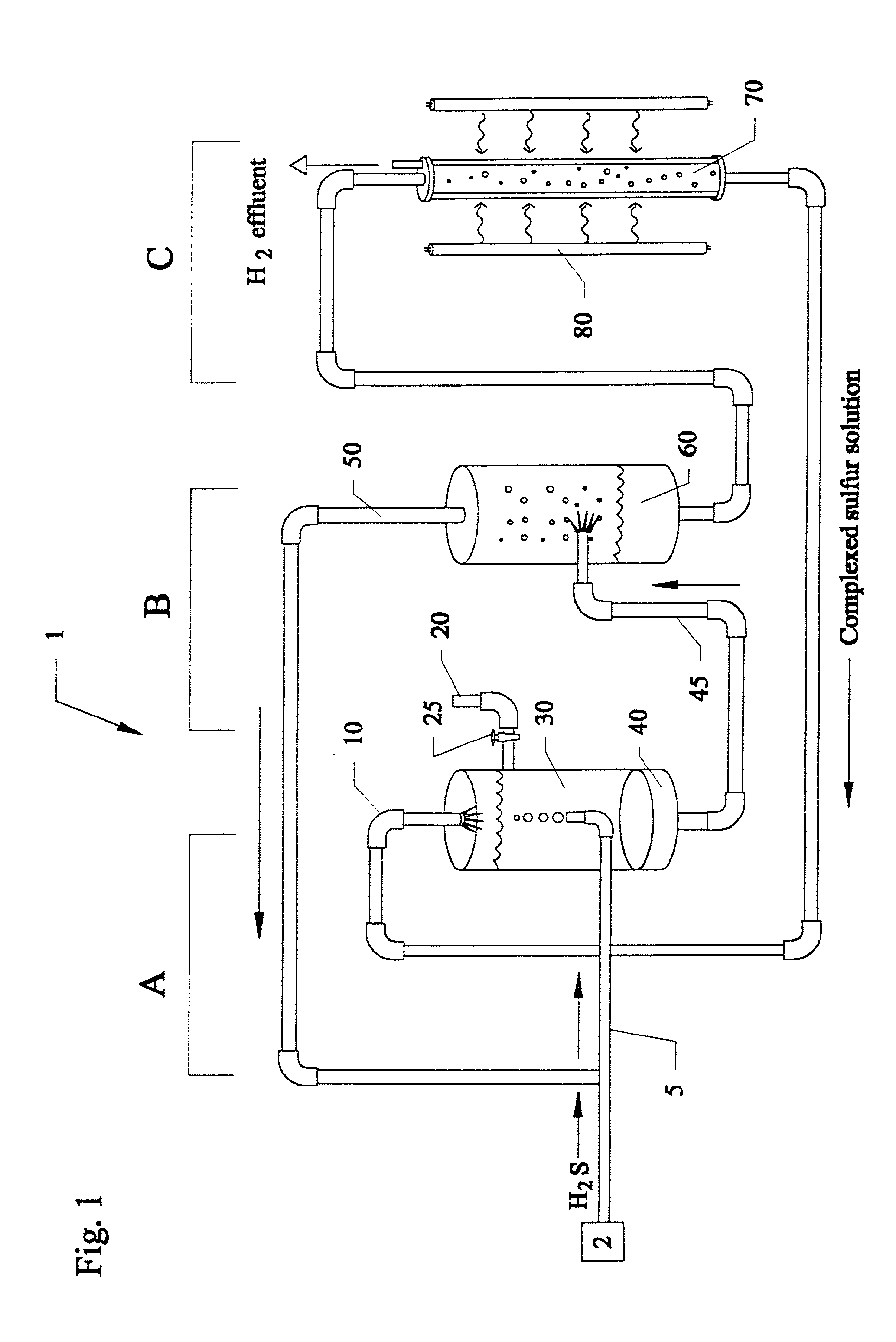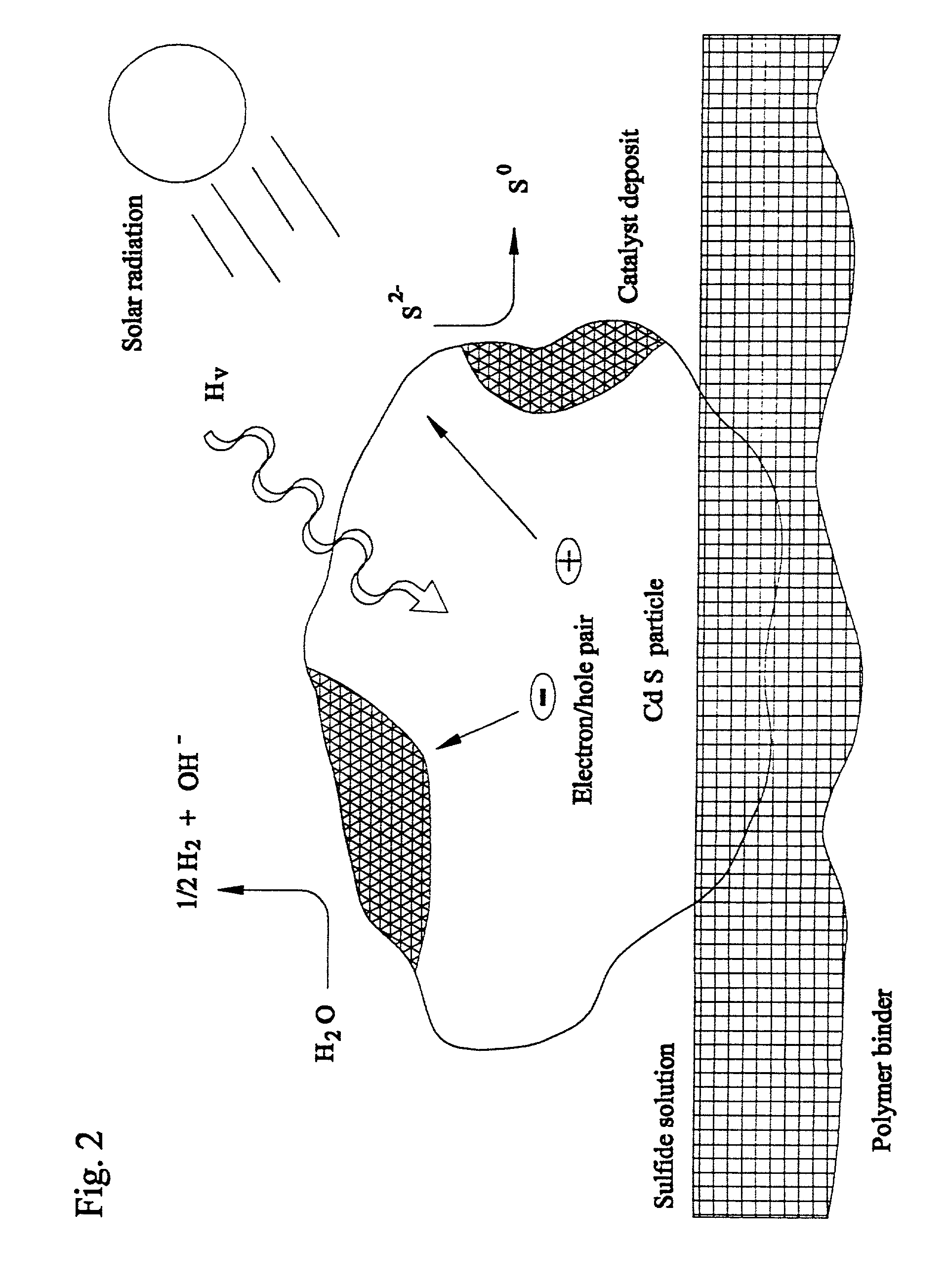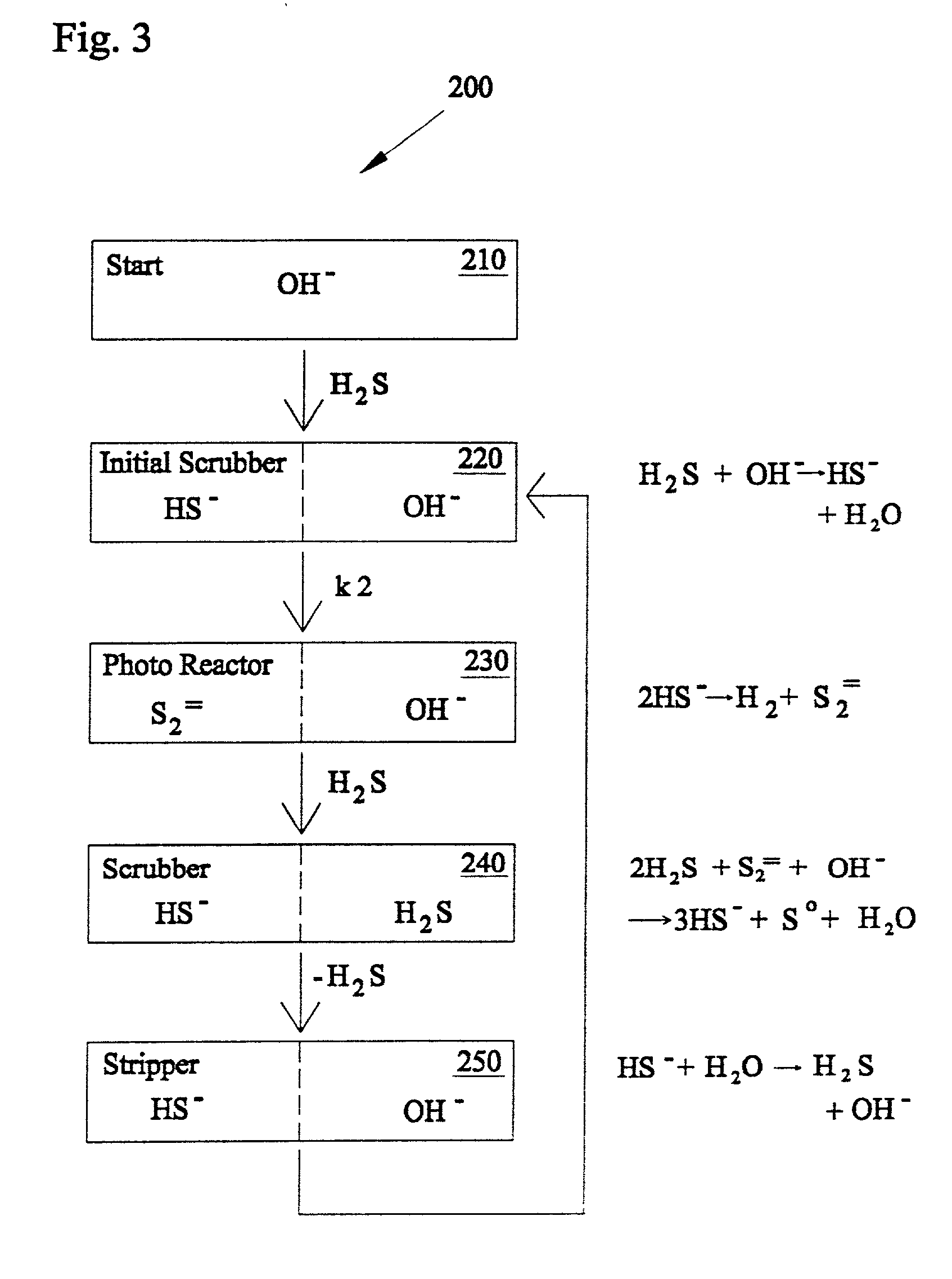Closed cycle photocatalytic process for decomposition of hydrogen sulfide to its constituent elements
a photocatalytic process and closed cycle technology, applied in the field of closed cycle photocatalytic process for decomposition of hydrogen sulfide to its constituent elements, can solve the problems of h.sub.2s gas in the refinery
- Summary
- Abstract
- Description
- Claims
- Application Information
AI Technical Summary
Benefits of technology
Problems solved by technology
Method used
Image
Examples
Embodiment Construction
[0019] Before explaining the disclosed embodiment of the present invention in detail it is to be understood that the invention is not limited in its application to the details of the particular arrangement shown since the invention is capable of other embodiments. Also, the terminology used herein is for the purpose of description and not of limitation.
[0020] FIG. 1 is a layout system 1 of the photoelectrochemical particle (PEP) process for H.sub.2S decomposition for sulfur recovery. The system 1 consists of three major units: A, the scrubber and filtration apparatus; B, an outgassing unit such as an H.sub.2S stripper, and the like; and C, the photoreactor. The scrubber used would be akin to a wet scrubber used in gas cleaning applications such as but not limited to the scrubber unit used in U.S. Pat. No. 5,211,923 to Harkness et al., which is incorporated by reference. Hydrogen sulfide H.sub.2S, coming from a source 2 such as a hydrodesulfurization plant, a sour natural gas well an...
PUM
 Login to View More
Login to View More Abstract
Description
Claims
Application Information
 Login to View More
Login to View More - R&D
- Intellectual Property
- Life Sciences
- Materials
- Tech Scout
- Unparalleled Data Quality
- Higher Quality Content
- 60% Fewer Hallucinations
Browse by: Latest US Patents, China's latest patents, Technical Efficacy Thesaurus, Application Domain, Technology Topic, Popular Technical Reports.
© 2025 PatSnap. All rights reserved.Legal|Privacy policy|Modern Slavery Act Transparency Statement|Sitemap|About US| Contact US: help@patsnap.com



